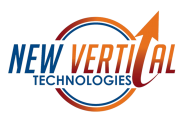Building a customer computer can be a fun and challenging activity for gamers and software developers, though there are more practical reasons for a custom system build. Although much of the computer builds cater to highly stylized systems, there are other types of builds that can meet the needs of businesses and industry. In this article I will review some of the basics on what is needed to consider on building a custom machine in 2022.
Building a Custom Computer

There are 4 basic resources to every computer system and additional supporting resources to help with management and input / output. These resources can be accomplished in multiple ways and for various purposes. Systems come in many different formats and for nearly any purpose, though the same basic components are required. Even if most of this information is common knowledge, keep reading because there may be some new information you have not considered.
The 4 basic resources are:
1. Long Term Storage - For storing files, programs and data
2. Short Term Storage - Serves as a staging area for the CPU
3. Processing Unit - retrieves data from short term storage, computers and places back into short term. Also, processes interrupts. (i.e. mouse, keyboard, other peripherals)
4. Network - that way in which data flow into and out of a system.
(Note: Graphics are an augmentation to Short Term Storage and the Processing Unit so not included as a separate processing area)
To accomplish these resource management, the following types are hardware are used.
1. Hard Drives - this is a long term storage for files, programs and data. I will delve into the hard drive architecture more in the future.
2. Ram - this is shorter term storage and only active while the computer is on. This is also called volatile storage as if the computer power is lost, then the ram will be emptied.
3. CPU - the basic brain for any computer system. The CPU is also referred to as the processor and in most systems are narrowed down to Intel, Apple, or AMD based. Although, there are many other makes of CPUs and other types of architecture such as RISC or ARM. The CPU is usually the most power hungry component in the computer and thus is very important that it be cooled correctly. A vast array of cooling mechanisms exist and must be considered when choosing a CPU. Cooling can be complex such as with a liquid cooled system, or can be simply a radiator that is attached to the CPU. IN nearly all cases a thermal compound is used to mate the CPU to the cooling unit. If this bond is not properly built, then the CPU will quickly overheat and will cease to operate or trigger a failsafe that will turn off the computer.
4. Motherboards - this hardware serves as a type of glue that connects the peripherals, CPU, RAM, Hard drives, Networks, Graphics Cards together. Motherboards come in many different forms. In the most basic sense, the motherboard is a "bus" or serves as the transport layer. This bus may also have other processors onboard for graphics, the BIOS, drivers or anything use the system needs in order to run.
5. Computer Case - In building the system, the case is a great way to organize all the components.
6. Graphics Cards - A graphics card is an augmented processor and RAM chip for a computer that allow for the rendering of a graphics matrix primarily for the display on a computer screen. Due to the intense calculations that occur during rendering, these chips are specialized components that calculate these operations in massive parallel operations. Therefore, the graphics card threading capability can easily reach into the thousands. Also, in order to supply those threads with data, the RAM associated with graphics cards are specialized to be significantly faster and allocated directly to the running CPU. Essentially, all computers with a visual interface need some form of graphics capability. Whether graphics are contained on the main CPU, added as a chip on the motherboard, or a separate graphics card; some system must be responsible for this interface. More to come on graphics card architecture in the future.
7. Power Supply Unit (PSU) - The ATX is the most common power supply and is typically attached to the motherboard. The ATX PSU the correct voltage to every component in the system. Power from normal residential supply is 120 volts AC. This power is converted by the PSU to +12 volt DC, +3.3 volt DC and +5 volt DC. Most of the systems attached to the computer are +5 volt where the CPU is typically 3.3 volt. However, in order to accomplish the amount of amperage (power) required by a CPU, there is a conversion from 12 volt to 3.3 volt which results in an amperage drop. Therefore, most modern CPU and GPU architectures require up to 2X the amount of total wattage. It is important when understanding the PSU that the 12 volt capacity is the strongest component on the PSU. This way the correct amount of power can be supplied to both the CPU and graphics cards.
8. Network cards - These are specialized components plugged into the computer to allow connecting the system to a network. This network may in turn be connected to a larger network and then expanded. (more to come on networking)
9. Peripherals - These systems often interface with the computer through various means. These could be input devices such as mouse, keyboard, microphone, drawing tablet or a camera, or they could be input / output devices such as a CD rom, external hard drive, credit card reader or simply output devices such as a monitor, headphones. Peripherals are what the computer interacts with and expands the capability of the basic core components.
